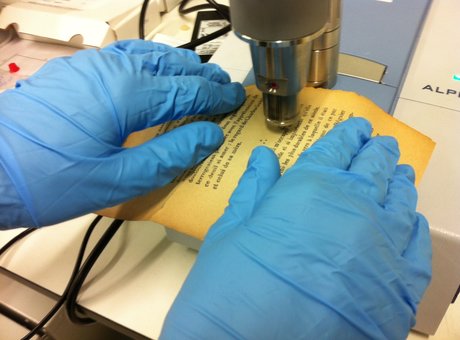Effects of NO2 and acetic acid on the stability of historic paper

12 August 2014
This research investigates degradation of historic paper in polluted environments during long-term dark storage. In an innovative experiment, degradation rates at realistic pollution levels are compared with degradation rates in the absence of pollution, using a set of real historic papers. The most abundant pollutants in repositories in post-industrial environments are taken into account: acetic acid and nitrogen dioxide. Their action was assessed in terms of reduction of 'handling' (as defined by decrease in degree of polymerisation) and 'display' (as defined by discolouration) lifetimes. Extrapolations to room conditions enabled lifetime predictions in conditions that are comparable to a real archival or library repository environments while prediction uncertainties were analytically evaluated to assess the significance of conclusions. While 10 ppb of NO2 does reduce the handling lifetime of almost all types of paper, their predicted lifetimes were still assessed to be several millennia, with the exception of acidic paper. Acetic acid at concentrations that are typical for archival and library repositories (<100 ppb) has significantly less effect than NO2 while it does not affect display lifetimes. From a conservation management perspective, it needs to be addressed whether the predicted reductions in otherwise significant handling lifetimes are of real concern and whether air filtration in archival and library repositories is justified.
Effects of NO2 and acetic acid on the stability of historic paper. Cellulose.
Menart, E., de Bruin, G., Strlič, M. (2014)
 Close
Close

